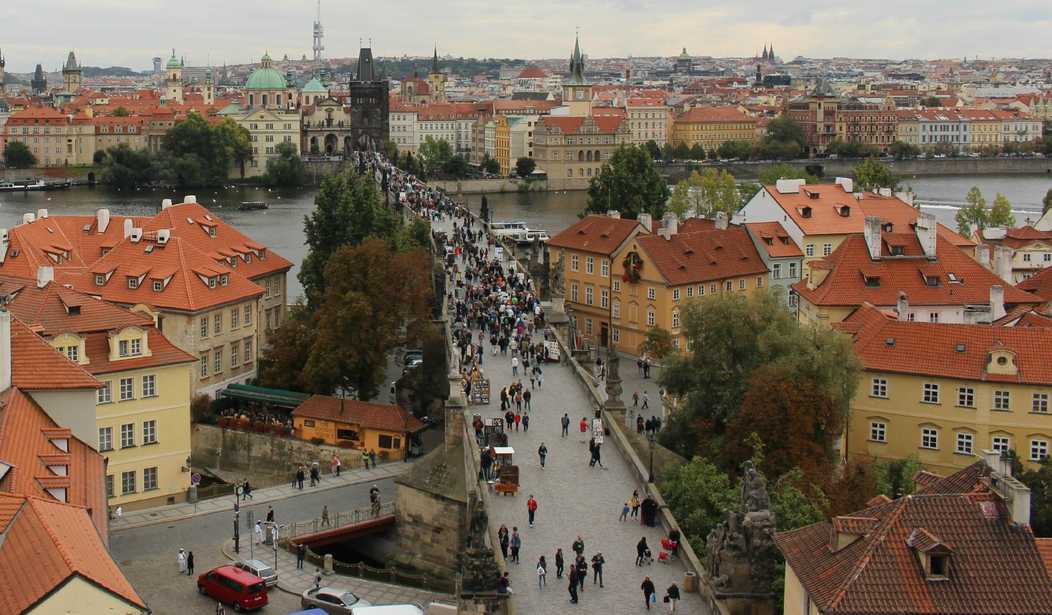Prague is not your normal European city. For Americans, it does not have the reputation of being the stereotypical romantic European getaway like Paris or Rome. In fact, most Americans likely give it relatively little thought to begin with. But if you think of Prague as a stale, ex-Soviet city, you are making a big mistake. Talk to anyone who has visited there recently and they will all say the same thing: Prague needs to be your #1 European destination.

Prague is a well-developed city of over 2 million people. It is the center of politics, commerce, and culture in the Czech Republic, and unlike other major cities in Europe, Prague has been fortunate to avoid major destruction from recent wars. Comparatively, Berlin was over 80% destroyed during World War II and has deep and visible scars from the Cold War. In Prague, however, even many of the Medieval-aged buildings and structures remain intact.
Architecture
Quite frankly, the architecture in Prague is breathtaking. In the older center of town, you’ll find block after block of intricately decorated and historical buildings. You can walk for miles without seeing a “modern” building. It is like taking a step back in time to the Renaissance.
If you really want to get a good look at the architecture, I highly recommend taking a boat tour. The Vltava River flows through the center of the city and provides great views from many different angles.
Another great viewpoint is from Prague Castle, which is actually a city center built on the tallest hill of the city. You can also find St. Vitus Cathedral, which is Prague’s largest Gothic cathedral, and the nation’s capitol building in this complex. From up on this hill you can see the entire city.
Art
For centuries Prague has been a center for art. Mozart wrote some of his best symphonies here and Kafka wrote his short stories in the city. Today that spirit still lives on.
Many local artists set up shop on the Charles Bridge (completed in 1402). Every few feet on this bridge you’ll find a different artist selling original paintings or jewelry. Along the bridge are 30 statues dedicated to different saints. With the backdrop of Prague Castle, this is arguably one of the most unique and artistically inspirational scenes in the world.
Additionally, if you are looking for something more artistically formal, Prague is known for its crystal and Bohemian china. You can find many stores here with varying degree of quality and most places will arrange shipping back to the United States if you purchase a set.
Religion
Holy Roman Emperor Charles IV was a passionate and devout Christian. He ruled the Kingdom of Bohemia and later became the the Holy Roman Emperor in the 14th Century.
According to religious teachings of the time, Jesus’ Second Coming was to begin and occur at the richest and most holy location on Earth. Emperor Charles IV took several steps to ensure that Prague became that location. He became a major patron of one of the most stunning features of the Prague skyline: St. Vitus Cathedral, which was initially designed by the same architect as Notre Dame. Its classic Gothic style is adorned with magnificent stained glass and surreal archways.
Charles IV used that cathedral to collect reliquaries containing all kinds of holy artifacts from all over the world. For example, one reliquary supposedly contains the actual hand of St. Vitus. Another is said to have pieces of the Holy Cross. A more unusual reliquary is alleged to contain the bust of St. Anne, the grandmother of Jesus Christ. These reliquaries are on display in the St. Vitus Treasury, located next to the cathedral.
Another unique religious location in Prague is Josefov, also known as the Jewish Quarter. This was one of the first areas in Medieval Europe set aside for the Jews to freely live, own businesses, and practice their religion. As a result, Prague is home to Europe’s oldest active synagogue, the Old New Synagogue. The Old New Synagogue even survived unscathed during the Nazi occupation. The Nazi’s actually worked to preserve the synagogue and collected and stored Jewish artifacts as they intended to turn the Old New Synagogue into a museum for an “extinct race.”
Food and Beer
The local food in Prague is distinctly Central European, which means it consists mostly of a “healthy” diet of meat and beer. Specialties in Prague include rabbit and dumplings. Overall, the meals are almost comparable to a Thanksgiving meal — lots of potatoes and gravy on everything. The good news is, eating out at nice restaurants every night won’t strain your wallet. An all out meal for two can easily be done for under $50.
Prague also has a strong microbrewery culture, with pilsner being the standard style. In fact, microbreweries are so common that they don’t have unique names for their beers. Typically you will be asked if you want a “dark,” “light,” or “mixed.” Some locations may add a fruit flavor such as banana or champagne. Be careful when ordering a sample flight. Beer there is consumed by the liter, so a sampling includes multiple glasses of what would be more comparable to 16 oz. beers back in the States. In any case, Prague is a paradise for anyone who loves good quality beer.
See next page for advice on planning a trip to Prague.
So How Do You Plan a Trip to Prague?
Basic logistics
The Czech Republic is part of the European Union, which makes customs and immigration fairly easy. If you are heading to the Czech Republic from another EU country, you can skip customs and immigration, however, the Czech Republic does not officially use the Euro. The local currency is called koruna, which is referred to by English speaking locals as “crowns.” At current exchange rates, one US dollar equals about 25 crowns. You can obtain Czech koruna in the United States via AAA or at some bank locations. Currency exchanges are common in Prague, but tend to be more expensive. The “crowded” season is summer. If you want to avoid the height of tourist season, try to plan your trip around late summer or early fall while it is still warm outside.
Travel To and From
Prague’s international airport is Václav Havel Airport (also known as Prague Ruzyne). Currently the only direct US flight is by Delta out of JFK Airport in New York (Delta flight DL210). Delta announced in late 2014 that it would be flown only during peak summer months, however it was still being flown in October, perhaps indicating a growing interest in travel to Prague. Otherwise, you will have to find a connecting flight with a local European airline.
If you arrive by land from another European country, you will drive through the Czech countryside. The Czech Republic does not have large, multi-lane, limited access highways like the US Interstate system or the German Autobahn. Most Czech highways are single lane, winding through small towns and hills. While it may be aggravating to a driver who is on a timetable, it is a beautiful and relaxing experience for sightseers. Traffic tends to be somewhat light and trucks are rare, making the trip easier.
Staying the Night
Prague is full of modern hotels, including many US based chains such as Hilton and Marriott. Those hotels can be found right downtown, within walking distance of many attractions. You can snag a room for as low as $100-150 per night.
However, if you really want to experience life in Prague, you should explore the option of renting an apartment. There are many services that handle short term rentals. I highly recommend Airbnb. You can find really nice apartments in the heart of the city for $50-$75 per night. These apartments are fully furnished, and in many cases, completely private. In most cases your host doesn’t live in the rental, but is typically somewhere in the vicinity to give you help or suggestions on activities around Prague.
Getting Around
Most of your activities in the city are within walking distance (20 minutes or less depending on your speed). The tricky location is Prague Castle. It is a longer walk, and is rather steep. Fortunately, there is a well-developed trolley system in the city. Tickets to the trolley are easy to buy around the city, including from many convenience stores. The tickets are typically good for three hours, allowing you to get on and off as much as you like for a cost of around $1.
Plan Now!
I have traveled to cities all over the world, from Latin America to Southeast Asia, but there isn’t a single city I can compare to Prague, with its many layers of history, art, and religion. It is much cheaper to stay in Prague than it is to stay in many other major European cities, but it is every bit as rewarding. You are so saturated in history you can feel it. You feel all the creative minds that passed through Prague. You feel the struggle against Nazism and Communism. You feel this unique identity that is the Czech Republic — all while enjoying a great locally brewed pilsner. A trip to Prague not only needs to be on your bucket list, it needs to be one of those bucket list items you actually complete.

















Join the conversation as a VIP Member